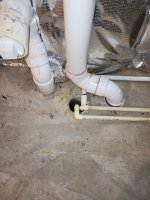The attached image is next to the furnace in my unfinished basement. It leads to the sump pump and was left this way by the builders. There is water at the bottom of the hole. My question is, does this hole need to be closed/sealed (to avoid critters getting in) or is it OK to leave it as is.

